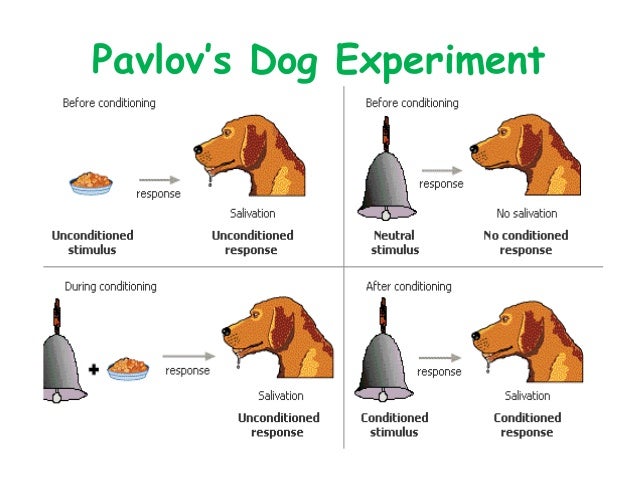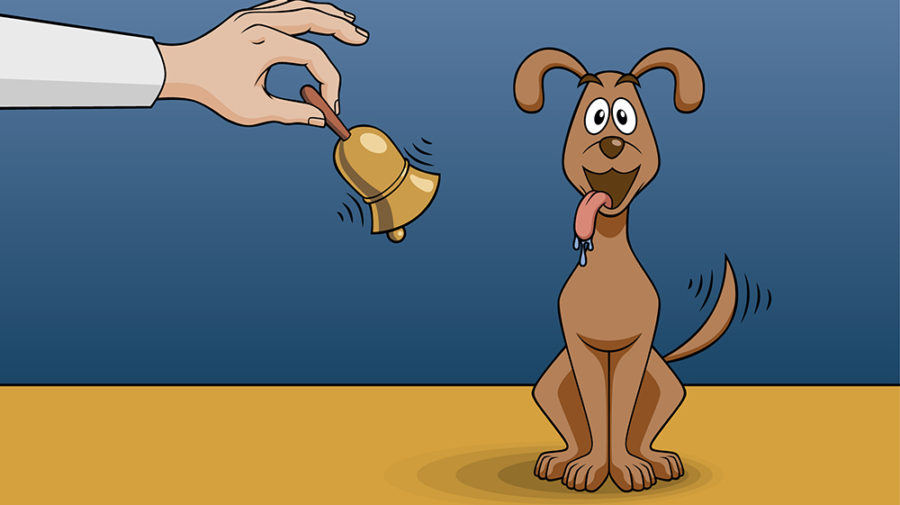
Introduction
Pavlov’s Dog and the Power of Association: How Our Minds Learn and Adapt
Ivan Pavlov’s experiment with dogs and conditioning has become a cornerstone in understanding learning and adaptation in psychology.
A brief overview of Pavlov’s Dog experiment and its significance in understanding learning and adaptation in psychology.
In the late 19th century, Pavlov conducted a series of experiments to investigate the digestive system of dogs. However, he stumbled upon a fascinating phenomenon now known as classical conditioning.
Dogs learned to connect the sound of a bell with food. They started salivating at the sound, even without any food. This demonstrated that animals, including humans, can form new associations between stimuli and responses through conditioning.
This experiment has profound implications for understanding learning and adaptation in psychology. It highlights the power of association in shaping behavior and responses. Our minds constantly form connections between stimuli and responses, which influence our thoughts, emotions, and actions.
Psychologists have learned about learning, habit formation, and adaptation by studying Pavlov’s Dog experiment. This knowledge has practical applications in various areas, including education, therapy, and marketing.
Pavlov’s experiment helps us understand how our minds work and how we learn and adapt to our environment through association.

Classical Conditioning: The Basics
Explaining the concept of classical conditioning and its association with Pavlov’s Dog experiment.
Classical conditioning is a fundamental learning process in psychology that involves associating two stimuli to produce a specific response. Ivan Pavlov famously demonstrated it in his experiment with dogs.
In Pavlov’s experiment, he noticed that the dogs salivated at the sight of food. He then introduced a neutral stimulus, the sound of a bell, before presenting the food. Over time, the dogs learned to connect the sound of the bell with the food, and eventually, just the sound made them drool.
This experiment illustrated how associations are formed in our minds and how our behavior can be modified through conditioning. It showed that our minds can learn and adapt to new stimuli and create associations between them.
The power of classical conditioning extends beyond the laboratory and into our daily lives. Advertisers, for example, often use this principle to create positive associations with their products. By pairing their products with desirable images or experiences, they aim to elicit positive consumer responses.
Understanding the concept of classical conditioning can help us recognize the influence of associations in our behavior and make conscious choices to reinforce positive associations or break negative ones. It is a powerful tool in shaping our learning and adaptation processes.
Pavlov’s Dog Experiment in Detail
Understanding Pavlov’s Dog experiment’s setup, procedure, and observations.
Pavlov’s Dog experiment is a classic example of classical conditioning in psychology. Ivan Pavlov, a Russian physiologist, conducted this experiment to study the learning process in dogs. Here’s a detailed look at the setup, procedure, and observations made during the experiment.
Setup:
Pavlov had a soundproof and controlled laboratory environment where he experimented. He used a specially designed apparatus that delivered food to the dogs and measured their salivation response.
Procedure:
The experiment began by playing a bell sound and then giving food to the dogs. Initially, the bell did not elicit any response from the dogs. However, after repeatedly pairing the bell with the food, the dogs started to associate the bell with food.
Observations:
Pavlov observed that the dogs started to drool when they heard the bell, even without food. This shows that the dogs had learned to connect the bell with the food and a learned response was created.
Pavlov’s Dog experiment has significantly impacted understanding the principles of learning and conditioning. It laid the foundation for further research in the field and continues to be a crucial experiment in the study of behavior and conditioning.
Unconditioned Stimulus (UCS) and Unconditioned Response (UCR)
Exploring the role of unconditioned stimulus and unconditioned response in classical conditioning.
Classical conditioning is a type of associative learning discovered by Ivan Pavlov, a Russian physiologist. It involves connecting a neutral and biologically significant stimulio elicit a response. The process relies on pairing an unconditioned stimulus (UCS) with an unconditioned response (UCR).
The UCS is a stimulus that naturally and automatically triggers a specific response without any prior learning. For example, in Pavlov’s famous experiment, food presentation (UCS) resulted in the dog salivating (UCR) without any conditioning.
The UCR is the automatic response that is triggered by the UCS. It is an instinctive reaction that occurs without conscious thought or effort. In the case of Pavlov’s dog, salivation was the natural response to the presence of food.
By pairing a neutral stimulus, such as a bell, with the UCS (food), Pavlov created an association between the two. The dog learned that the bell meant food was coming, so it started to drool when it heard it. This newly discovered response is conditioned because it is acquired through conditioning or learning.
The role of UCS and UCR in classical conditioning is important for understanding how our minds learn and adjust to new stimuli. By creating associations between previously neutral stimuli and naturally occurring stimuli, we can develop new responses and behaviors. This process has significant implications in psychology and areas such as education, advertising, and therapy.
Conditioned Stimulus (CS) and Conditioned Response (CR)
Discussing the process of acquiring a conditioned response through a conditioned stimulus in classical conditioning.
In the world of psychology, Ivan Pavlov’s experiments with dogs and classical conditioning are often seen as a groundbreaking discovery. Classical conditioning is a type of learning where a subject associates a neutral stimulus with a specific response. This process involves the establishment of a conditioned stimulus (CS) and a conditioned response (CR).
Pavlov used a bell sound and paired it with food in his experiments. The dogs naturally salivated in response to the food (the automatic, unconditioned response). The dogs learned to drool at the sound of the bell, even without food.This salivation in response to the bell became the conditioned response (CR), acquired through the association with the conditioned stimulus (CS).
Acquiring a conditioned response through a conditioned stimulus demonstrates how our minds learn and adapt. It highlights the power of association in shaping our behaviors and responses to specific stimuli.
Pavlov’s experiments have impacted our understanding of learning processes and how associations are formed in our minds. They continue to be a fundamental pillar of psychology, providing valuable insights into the principles of behavior and cognition.

Source: i.ytimg.com
Extinction and Spontaneous Recovery
Examining the phenomena of extinction, where conditioned responses fade away, and spontaneous recovery, where they can reappear.
Ivan Pavlov’s experiment with his dog in the field of psychology helps us understand how our minds learn and adapt through association.
Pavlov noticed an interesting phenomenon after repeatedly pairing the sound of a bell with food to condition his dog. When he rang the bell without providing food, the dog’s salivation response eventually faded away. This process is known as extinction, where conditioned responses gradually diminish and may disappear completely.
However, what makes this experiment even more intriguing is the occurrence of spontaneous recovery. If Pavlov rang the bell again after a while, the dog’s salivation response would come back, but not as strong as before. This phenomenon demonstrates that even after extinction, conditioned responses can unexpectedly resurface.
These findings highlight the power of association in our minds and how repeated experiences can modify our responses. Understanding these processes can help psychologists and researchers delve deeper into the complexities of human behavior and pave the way for more effective conditioning techniques.
Generalization and Discrimination
Understanding how organisms generalize and discriminate between stimuli in classical conditioning.
In classical conditioning, generalisation and discrimination play a crucial role in how organisms learn and adapt to their environment. Ivan Pavlov’s experiments with dogs and conditioned responses provide valuable insights into this process.
Generalization refers to the tendency of an organism to respond to stimuli that are similar to the conditioned stimulus. If a dog is trained to drool when a bell rings, it may also drool when it hears similar sounds such as a doorbell or a phone ringing.This shows that the dog has generalized the association between the bell and food to other similar stimuli.
Discrimination is the ability to tell apart similar things and only react to a particular stimulus. Dogs can learn to distinguish between different sounds, such as a bell and a doorbell, if they have been trained to do so.
Understanding generalization and discrimination can help us comprehend how our minds learn and adapt to new experiences. By associating different stimuli with certain outcomes, our brains form connections that shape our behavior and responses. This knowledge can be applied in various fields, such as education, advertising, and therapy, to create desired associations and modify behaviors.
Recognizin the power of association in classical conditioning can provide valuable insights into human learning and adaptation, allowing for more effective strategies to shape behaviors and responses.
Exploring real-life examples and applications of classical conditioning in human behavior and learning.
Classical conditioning, a concept famously demonstrated by Ivan Pavlov and his experiment with dogs, has profound applications in understanding human behavior and learning. Here are some key examples:
- Advertising: Advertisers often use classical conditioning techniques to create positive associations with their products. Companies use appealing visuals, catchy tunes, and inspiring lifestyles to create positive feelings in customers and persuade them to purchase their products.
- Phobias and Fears: Many phobias and fears develop through classical conditioning. Someone who goes through a traumatic event inside an elevator might start fearing elevators because they connect them with danger. This association can be so strong that even being near an elevator can trigger anxiety or panic.
- Taste Aversion: Classical conditioning can also lead to taste aversion, where a person develops a strong aversion to a particular food or drink after getting sick from consuming it. The strong connection may continue for a while, even if the illness was not caused by the particular food or drink.
- Therapy: Classical conditioning techniques are used in therapies such as exposure therapy and systematic desensitization to help individuals overcome phobias or anxieties by gradually exposing them to the feared objects or situations while providing a sense of safety and relaxation.
Understanding classical conditioning and its applications can provide valuable insights into human behavior and learning, allowing us to better comprehend how associations form and influence our thoughts, emotions, and actions.
Controversies and Criticisms
Analyzing criticisms and alternative perspectives on Pavlov’s Dog experiment and classical conditioning.
Pavlov’s Dog Experiment is one of psychology’s most well-known and influential experiments, but it has not been without criticisms and controversies. The experiment helped us understand classical conditioning and associative learning. However, some researchers and scholars have different concerns and perspectives.
Critics argue that the experiment oversimplifies the process of learning. They claim that real-life learning is a complex and dynamic process that involves more than just stimulus and response associations. Some argue that the experiment may have created an artificial environment that may not accurately represent real-world learning experiences.
Alternative perspectives suggest that cognitive factors play a significant role in learning and that simple conditioning cannot explain all aspects of behavior. These perspectives emphasize the role of higher-order cognitive processes, such as attention, memory, and reasoning, in learning and adaptation.
Pavlov’s Dog Experiment is still considered important for understanding conditioning and learning, despite criticisms and alternative perspectives. It serves as a basis for further research and exploration in the field of psychology.
:max_bytes(150000):strip_icc()/puppy-dinner-time-174535929-58adc63d3df78c345bdd0c27.jpg)
Source: www.verywellmind.com
Briefly introducing other theories and concepts that expand upon classical conditioning.
Pavlov’s Dog and the Power of Association: How Our Minds Learn and Adapt.
Ivan Pavlov’s experiment with dogs and a bell helped establish the basics of classical conditioning. However, modern research has expanded upon this concept, providing additional insights into learning and adaptation.
One such perspective is operant conditioning, proposed by B.F. Skinner. This theory focuses on the consequences of behavior, suggesting that behaviors that are reinforced are more likely to be repeated. By understanding the rewards and punishments associated with specific actions, individuals and animals can modify their behavior accordingly.
On the other hand, cognitive learning theories emphasise mental processes’ role in learning. Albert Bandura’s social learning theory proposes that individuals can learn by observing others and imitating their behavior. This theory highlights the importance of modeling and vicarious learning.
Additionally, neuroplasticity research has shown that the brain has the ability to adapt and change throughout our lives. This finding challenges the notion that learning is solely limited to early childhood.
Pavlov’s experiment helped understand classical conditioning, but there are other theories and concepts that aid in learning and adaptation. By considering these perspectives, we can better understand how our minds learn and adapt to the world around us.
Conclusion
Pavlov’s Dog experiment revolutionized the field of psychology and provided invaluable insights into the way our minds learn and adapt through association. The experiment demonstrated that by consistently associating a neutral stimulus (the bell) with an unconditioned stimulus (the food), the unconditioned response (salivation) could be triggered by the conditioned stimulus alone (the bell). This process of classical conditioning revealed that learning can occur through the formation of associations.
By understanding the power of association, we can apply this knowledge to various areas of our lives. From marketing and advertising strategies that rely on creating positive associations with a brand to training techniques that encourage desired behaviors through reinforcement, the principles of Pavlov’s Dog experiment continue to shape our understanding of human learning and behavior.
Furthermore, this experiment highlighted the concept of stimulus generalization, where similar stimuli can elicit the conditioned response. This helps explain why we may have certain emotional or behavioral responses to cues that resemble the original stimulus.
Pavlov’s Dog experiment helps us understand how our minds learn and adapt through association. By recognizing and harnessing the influence of associations, we can better navigate and shape our behaviors, preferences, and responses in various contexts.
XII. Frequently Asked Questions
Addresses common queries and misconceptions about Pavlov’s Dog experiment and classical conditioning.
Pavlov’s Dog experiment and classical conditioning are well-studied in psychology, but there are still questions and misunderstandings about this interesting topic. Here are some frequently asked questions:
- What was Pavlov’s Dog experiment all about?
- Ivan Pavlov studied the relationship between a bell sound and dogs salivating. Pavlov found out that dogs could learn to associate the sound of a bell with food, making them salivate even when there was no food present.
- Is classical conditioning only applicable to animals?
- No, classical conditioning is a learning process that also applies to humans. It explains how we develop associations between stimuli and responses, leading to learned behaviors and emotional responses.
- Can classical conditioning be applied in everyday life?
- Yes, classical conditioning is present in many aspects of our daily lives. From advertising techniques that create positive associations with products to phobias that develop from negative experiences, classical conditioning plays a significant role in shaping our behaviors and responses.
- Does classical conditioning have any limitations?
- While classical conditioning is a powerful learning tool, it does have limitations. It works best for involuntary, reflexive responses and may not be effective for complex or voluntary behaviors.
The principles of classical conditioning and Pavlov’s Dog experiment help us understand how our minds learn and adapt.




